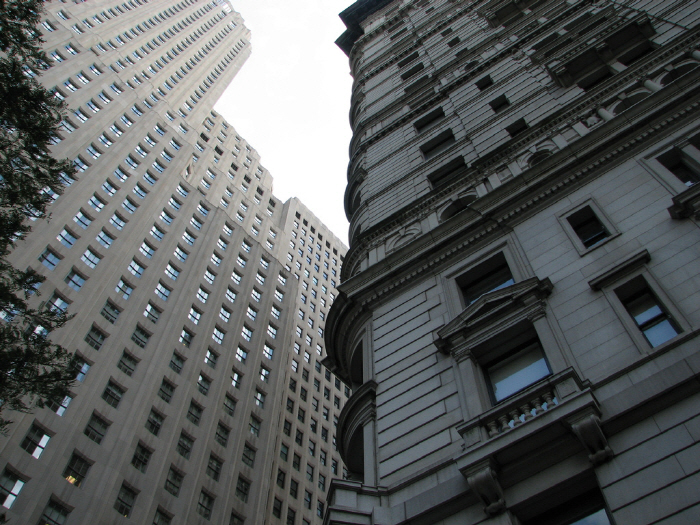Strong US auto loan performance and fewer banks easing underwriting terms are among the highlights from Fitch Ratings' latest auto loan asset quality report.
While underwriting terms remain eased relative to historical standards, recent Federal Reserve senior loan officer survey data showed that just 3.3% of net respondents eased underwriting standards in the second quarter of 2015. This compares with 14% of net respondents who eased standards in the July 2013 survey. Although Fitch views this positively, as long as terms continue to be relatively relaxed, newer loan vintages will continue to underperform earlier ones, eventually leading asset quality to revert to historical averages over the medium term.
An improving employment picture, steadier economic conditions and falling gas prices are contributing to robust auto sales. These same factors could push new vehicle sales in the US to break 17 million units for the first calendar year since 2001. Fitch believes that high levels of competition between major auto lenders will still result in further easing of terms, lower FICOs and new entrants into subprime lending over the near term, despite the decreased pace of easing.
Auto loans are expected to remain one of the faster growing asset classes for US banks and other financial institutions. The July Fed loan survey showed that over second quarter of 2015, loan officers seeing an increase in auto loan demand exceeded those seeing decreases by a margin of 18%. Macroeconomic factors that correlate with auto loan performance, such as unemployment, also point to the market remaining robust. That said, competitive underwriting conditions, combined with potential future pressure on auto residual values and consumers' ability to continue to service their personal debt obligations in a rising rate environment, could push the market toward weaker asset quality over the medium term.
Currently however, despite competition, US auto lenders are still enjoying generally strong asset quality through the first half of 2015. Year-over-year performance for the top nine Fitch-rated auto lenders was mixed, reflecting the continued easing of underwriting standards, higher subprime lending and a decline in used car values in recent periods. However, prime loans saw improvements that were attributable to better consumer discretionary spending -- a seasonal effect typical in the first half of the calendar year following year-end consumer spending surges.
Fitch's prime Auto ABS index performance remained solid, while Fitch's subprime auto ABS index experienced a 47% increase in annualized net losses to 5.44% in second-quarter 2015. Nonetheless, the subprime auto loan index still remains well below peak recessionary levels in late 2008 to early 2009.
The top nine Fitch-rated auto lenders, including captives, held about $473 billion of auto loans at the end of June 2015. Of the nine, only General Motors Financial and Capital One have any meaningful subprime exposure in their loan portfolios.
Fitch: US Auto Lenders Slowing Down on Eased Underwriting Terms

1 Wall Street and Empire Building (Michael Daddino_flikr)
Wednesday, September 16, 2015 8:37 PM UTC
Editor's Picks
- Market Data
Most Popular



 Global Markets React to Strong U.S. Jobs Data and Rising Yields
Global Markets React to Strong U.S. Jobs Data and Rising Yields  US Gas Market Poised for Supercycle: Bernstein Analysts
US Gas Market Poised for Supercycle: Bernstein Analysts  Fed May Resume Rate Hikes: BofA Analysts Outline Key Scenarios
Fed May Resume Rate Hikes: BofA Analysts Outline Key Scenarios  UBS Predicts Potential Fed Rate Cut Amid Strong US Economic Data
UBS Predicts Potential Fed Rate Cut Amid Strong US Economic Data  US Futures Rise as Investors Eye Earnings, Inflation Data, and Wildfire Impacts
US Futures Rise as Investors Eye Earnings, Inflation Data, and Wildfire Impacts  Goldman Predicts 50% Odds of 10% U.S. Tariff on Copper by Q1 Close
Goldman Predicts 50% Odds of 10% U.S. Tariff on Copper by Q1 Close  Gold Prices Fall Amid Rate Jitters; Copper Steady as China Stimulus Eyed
Gold Prices Fall Amid Rate Jitters; Copper Steady as China Stimulus Eyed  China's Refining Industry Faces Major Shakeup Amid Challenges
China's Refining Industry Faces Major Shakeup Amid Challenges  Mexico's Undervalued Equity Market Offers Long-Term Investment Potential
Mexico's Undervalued Equity Market Offers Long-Term Investment Potential  Moldova Criticizes Russia Amid Transdniestria Energy Crisis
Moldova Criticizes Russia Amid Transdniestria Energy Crisis  European Stocks Rally on Chinese Growth and Mining Merger Speculation
European Stocks Rally on Chinese Growth and Mining Merger Speculation  UBS Projects Mixed Market Outlook for 2025 Amid Trump Policy Uncertainty
UBS Projects Mixed Market Outlook for 2025 Amid Trump Policy Uncertainty  Gold Prices Slide as Rate Cut Prospects Diminish; Copper Gains on China Stimulus Hopes
Gold Prices Slide as Rate Cut Prospects Diminish; Copper Gains on China Stimulus Hopes  2025 Market Outlook: Key January Events to Watch
2025 Market Outlook: Key January Events to Watch  Wall Street Analysts Weigh in on Latest NFP Data
Wall Street Analysts Weigh in on Latest NFP Data  U.S. Treasury Yields Expected to Decline Amid Cooling Economic Pressures
U.S. Treasury Yields Expected to Decline Amid Cooling Economic Pressures  Energy Sector Outlook 2025: AI's Role and Market Dynamics
Energy Sector Outlook 2025: AI's Role and Market Dynamics 


























